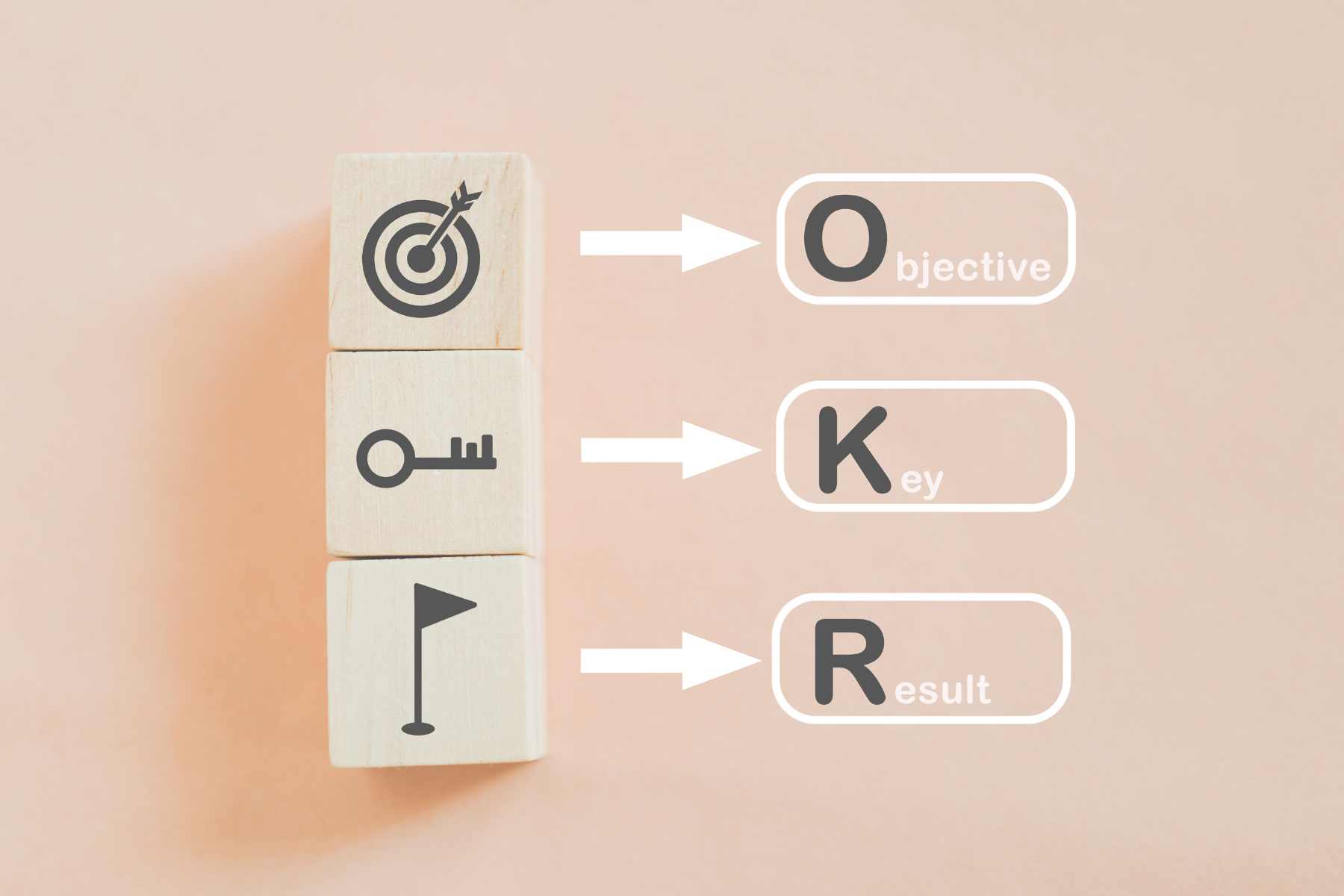Objectives, key Results (OKRs), and Key Performance Indicators (KPIs) are widely recognized frameworks that have gained considerable popularity in goal-setting and performance assessment.
While both track progress and promote organizational performance, choosing the most suitable strategy requires an understanding of their subtle differences.
This introductory exploration piece delves into the comparative aspects of OKRs and KPIs, shedding light on their unique features, applications, and benefits.
By unraveling the differences between these frameworks, your organization can make informed decisions to optimize goal-setting, content creation, team collaboration, and performance measurement practices. Getting these two frameworks right ultimately leads to enhanced outcomes and success.
It gives your content creation team better direction when curating compelling content. We at ContentGo can help you get professional content authors, and we shall highlight how we help align with your OKRs and KPIs.
Let’s get started.
How do OKRs and KPIs differ from one another?

OKRs (Objectives and Key Results) and KPIs (Key Performance Indicators) are strategic frameworks for creating goals and measuring performance.
OKRs strongly emphasize developing aggressive, quantifiable goals accompanied by significant outcomes that chart progress. Conversely, KPIs are precise measures used to evaluate performance and align with the company’s present and future objectives.
The primary distinction between OKRs and KPIs lies in their respective approaches. OKRs emphasize goal setting and tracking progress, whereas KPIs focus on measurable performance metrics.
Both frameworks are implemented continuously over distinct time frames by all teams, including individual and leadership teams.
When should you utilize KPIs, and when OKRs?
Here is how you can use each framework for goal setting:
Goals and Important Results
OKRs are particularly well-suited for organizations with a strategic focus on setting ambitious, long-term business objectives and fostering innovation and growth.
These organizations prioritize pushing boundaries, driving breakthroughs, and reaching company-wide objectives. OKRs provide a framework that encourages employees to think big and set stretch goals beyond the status quo.
Key Performance Indicators
KPIs are ideal for measuring performance and tracking standalone metrics on an ongoing basis that align with short-term objectives.
KPIs metric tracking focuses on monitoring specific target metrics of your business operations, such as sales, employee response, department initiatives, marketing, finance, or customer service. These measurable objective metrics provide real-time insights into the performance of various organizational functions or processes.
KPIs are often tied to specific targets or benchmarks and help your marketing and sales teams focus on their day-to-day responsibilities and achieve short-term company goals.
Which benefits and drawbacks do OKRs offer?
The advantages of OKRs are listed below:
- Alignment and Transparency: OKRs facilitate alignment by ensuring that your individual, team, and company objectives are interconnected and contribute to the overall mission.
- Ambitious Goal Setting: OKRs encourage your organizations to set ambitious and aspirational goals that push boundaries and foster innovation. They motivate teams to think creatively and aim for significant achievements, including yearly and monthly growth.
- Employee Engagement: By involving employees in the OKR process, organizations foster a sense of ownership and empowerment, increasing employee engagement initiatives and motivation.
- Focus on Results: OKRs emphasize measurable key indicators, driving an effort-based, results-oriented culture and clarifying what needs to be accomplished.
- Adaptability: you can adjust OKRs regularly to reflect changing priorities, market conditions, and organizational revenue targets.
Drawbacks of OKRs:
On the flip side, here are some of the downsides of OKRs:
- Overambition and Unrealistic Goals: Setting unrealistic or excessively ambitious OKRs might result in irritation, low motivation, and a lack of focus. A critical success factor is to strike a balance between challenging goals and attainability.
- Measurement Challenges: Defining appropriate metrics and tracking progress accurately can be complex, especially for specific qualitative or long-term objectives.
- Potential for Misalignment: Without proper communication, resource management, and alignment, your teams may pursue conflicting OKRs, causing confusion and inefficiency.

What are KPIs’ advantages and disadvantages?
When it comes to KPIs, here are both the benefits and drawbacks:
Benefits of KPIs:
- Measuring Performance: KPIs provide a quantitative and tangible way to assess success drivers’ performance and progress towards specific targets or benchmarks.
- Focus and Accountability: KPIs help marketing teams focus on their key responsibilities, ensuring accountability and improving performance.
- Data-Driven Decision-Making: KPIs provide valuable insights based on objective data, enabling informed decision-making and course corrections.
- Operational Efficiency: Organizations can pinpoint areas for improvement, streamline procedures, and improve overall efficiency by monitoring critical KPIs.
KPI drawbacks include:
- Narrow Focus: Overreliance on KPIs may lead to a narrow focus on specific metrics, potentially ignoring broader aspects contributing to overall organizational success.
- Incomplete Picture: KPIs often provide a limited snapshot of performance, needing more context and qualitative aspects crucial for a comprehensive understanding.
- Resistance to Change: If introduced and communicated effectively, implementing KPIs can avoid resistance, particularly when perceived as a surveillance tool rather than an improvement.
What are some KPI and OKR examples?
Here are a few illustrations of OKR projects:
Objective: Increase brand recognition and visibility.
Key Result 1: Achieve a 20% increase in website traffic from organic search within three months.
Key Result 2: Gain 10,000 new followers on social media before the end of the quarter.
Objective: Improve content engagement and user experience
Key Result 1: Increase average time spent on website pages by 30% by implementing interactive content elements.
Key Result 2: Achieve a 20% decrease in bounce rate by enhancing website navigation and optimizing page load times.
These examples demonstrate how OKRs can be tailored to specific goals and measured using key results that are quantifiable, time-bound, and aligned with the desired outcomes.
Here are a few illustrations of KPIs from various fields:
Advertising company KPIs:
Customer Acquisition Cost (CAC) refers to the usual expenditure in acquiring a new customer.
Return on Advertising Spend (ROAS) represents the income-to-advertising-expenses ratio.
Conversion Rate represents the percentage of website visitors who successfully perform a desired action, such as purchasing or completing a form.
The proportion of receivers who open a promotional email is the email open rate.
Sales KPIs:
Sales Revenue is the total revenue generated from sales.
Sales Growth Rate denotes the percentage of sales increase within a specified timeframe.
Customer Lifetime Value (CLTV) predicts the expected sales a customer generates throughout their entire business relationship.
The average deal size represents the average value of every closed sales deal.
You can also use KPIs to measure finances, employee turnover rates, performance, and customer satisfaction scores.
These examples demonstrate how KPIs can be specific, measurable metrics that track organizational performance and help businesses assess their progress and success in various areas.
What are the best methods for successfully deploying OKRs or KPIs?
Here is a list of best practices for implementing OKRs or KPIs effectively for goal achievement:
- Cascade Objectives: Align objectives from top to bottom, ensuring clarity and transparency throughout the organization.
- Achievable Key Results: Set realistic and measurable results or attainable targets within the given period.
- Regular Tracking: Monitor progress against qualitative and quantitative metrics, provide timely feedback, and make necessary adjustments.
- Engage Stakeholders: During the process, essential stakeholders are actively involved to secure their support and sense of ownership.
- Relevant Metrics: Select ongoing metrics aligning with the objectives and consider their performance over time.
- Technology Utilization: Leverage goal-setting and software reporting tools to streamline the process and enhance visibility.
- Cultivate Accountability: Foster a culture of accountability, holding teams and individuals responsible for their goals.
- Continuous Evaluation: Regularly evaluate and refine the OKR or KPI framework to adapt to changing business priorities.
- Communication and Alignment: Ensure clear communication and alignment across teams and departments.
- Training and Education: Provide training and education to help employees effectively understand the importance and implementation of OKRs or KPIs.
Adhering to these best practices can optimize your organization’s OKRs or KPIs, improving goal management and performance measurement.
Are OKRs and KPIs necessary for content marketing?
OKRs and KPIs are crucial in driving success and measuring performance in content marketing. They provide a framework to set clear objectives and track progress, ensuring content efforts align with business goals to turn prospects into leads.
OKRs are essential for content marketing as they help establish strategic objectives such as increasing brand awareness, driving engagement, generating outbound and inbound leads, or improving customer retention.
By defining key results, such as website traffic, social media reach, or content conversions, OKRs enable content teams to focus on measurable outcomes.
You may evaluate performance indicators and the success of your content marketing initiatives with the aid of KPIs.
Engagement metrics include time spent on a page and social media shares. KPIs also account for lead generation metrics like form submissions and email sign-ups. Finally, they examine metrics relevant to revenue, such as website conversion rates. KPIs offer concrete data points to assess the effectiveness of content and guide optimizations.
Do content marketers factor in OKRs and KPIs during the writing process?
Yes, content marketers take KPIs and OKRs into account when writing.
Content marketers ensure their material contributes to the intended results by matching their content aims with the overall marketing and business goals. They specify specific goals for every piece of content, including raising website traffic, boosting conversion rates, or raising brand awareness. Then, measurable vital results that are particular to these objectives are provided.
Content marketers analyze pertinent Key Performance Indicators (KPIs) to evaluate the effectiveness and impact of their content. To gauge the success of their content initiatives, they monitor KPIs like engagement rates, click-through rates, lead generation, social shares, or content conversions. These KPIs offer insightful data on the effectiveness of the content, enabling marketers to plan their content strategy more effectively and improve results.
Can ContentGo help enhance your OKR and KPI goals?
Content marketers’ goals of creating exciting and powerful content align with ContentGo’s focus on expertly written, high-quality content. Your content marketers can use our platform to develop content that aligns with your OKRs. Your teams can also get help tracking performance using pertinent KPIs by employing our dynamic network of freelancers, smart technologies, and multilingual content creation capabilities.
To get started today, create a publisher account with ContentGo to have access to our team of skilled content producers who can assist you in achieving your content marketing objectives.












